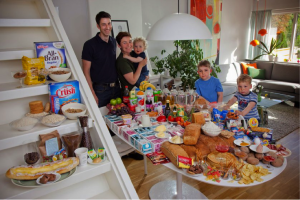When people think of OkCupid, big data isn’t often the first thing that comes to mind. As a free online dating website, it’s certainly easy to dismiss OkCupid as a reputable source of information – yet, the data that comes from the millions of interactions can actually lead to interesting insights on the way certain people interact with certain people.
OkCupid publishes a blog called OkTrends, which seeks to find trends in the way people interact with each other, to both bring out interesting correlations for amusement and to gain insight on how to better connect people romantically. What with the wealth of information that users provide on their own personality and demographics, OkTrends combines humor and data science to produce amusing results, produced in a fairly digestible format for almost all audiences. For example, OkCupid found that “Among all our casual topics, whether someone likes the taste of beer is the single best predictor of if he or she has sex on the first date.” [1].
However, the data that OkCupid also possesses has also been used to open a discussion for a more socially impactful topics – like race and how it affects our perceptions of others. In Race and Attraction, OkCupid revisits one of their first analysis of race and attraction from 2009, to see how racial preferences have changed in the last 5 years.
From the graphs below, they found that racial preferences from 2009 through 2014 have actually stayed about the same, and in some cases, “racial bias has intensified a bit.”
source: http://blog.okcupid.com/index.php/race-attraction-2009-2014/
source: http://blog.okcupid.com/index.php/race-attraction-2009-2014/
These preferences are also checked against the data from another dating website, DateHookup, with “a distinct user base, a distinct user acquisition model, a distinct interface, yet their data reflects the same basic biases.” These racial preferences seem to stay similar, with the common trend of asian men and black people taking the greatest hits in preference.
Curiously enough, while the behavior of people have not changed much, when asked explicitly about certain racial attitudes, users have answered their match questions to as less biased overall.
source: http://blog.okcupid.com/index.php/race-attraction-2009-2014/
While the data presented is of course coming from the dating world, it does still have significance in the way we understand the way we perceive others based on race. This article suggests that in the past five years, we have been telling ourselves that our racial attitudes are less biased, but our behavior has remained unchanged. Of course, the data isn’t definitive in any way. However, it does present a launching point for a discussion on racial awareness, to deeper understand the differences between what we believe and how we actually act.












